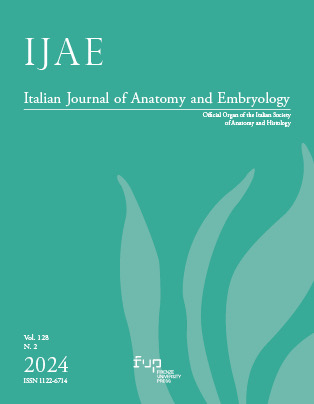Drawings, artifacts and anatomical preparations: the collections of the Senese Museums for teaching Anatomy yesterday as today
Published 2024-12-31
Keywords
- anatomy,
- museums collections,
- heritage,
- teaching
How to Cite
Copyright (c) 2024 Davide Orsini, Mariano Martini, Stefano Ottoboni, Margherita Aglianò, Daniela Franci, Paola Lorenzoni, Daniele Saverino

This work is licensed under a Creative Commons Attribution 4.0 International License.
Abstract
The scientific museology highlights the importance of the specialized museum collections of anatomy as tools for teaching and scientific communication. The cultural heritage, deriving from research and study activities, have been preserved over the centuries They are not simple goods to be exhibited, but are dissemination means of scientific culture and specialized teaching at university level. In fact, anatomical tables, models and preparations of the Senese museums are still used for teaching anatomy, as well as for dissemination activities to a large non-specialized audiences. The anatomical collections and the musealization of new findings are proposed as active means of communication and teaching, of health education and research on the biological history of man. Through their collections, the universities museums of anatomy allow to carry out empirical studies of a historical nature. In addition, the evolution of technologies can help the knowledge of the human body. The historical re-reading of anatomy by means of the goods present in the museums of human anatomy, the study of the technical and practical knowledge at the base of such finds, the possibility of using them for educational purposes alongside the most up-to-date tools that technology allows us to have available, are producing a new interest in the discipline that, overcoming the limits of a specialized knowledge, can acquire the value of a form of historical communication of the human body that can also be communicated to an inexperienced audience, as well as to students of medical degree courses and health professions.

